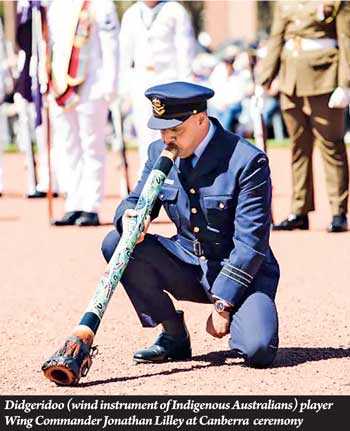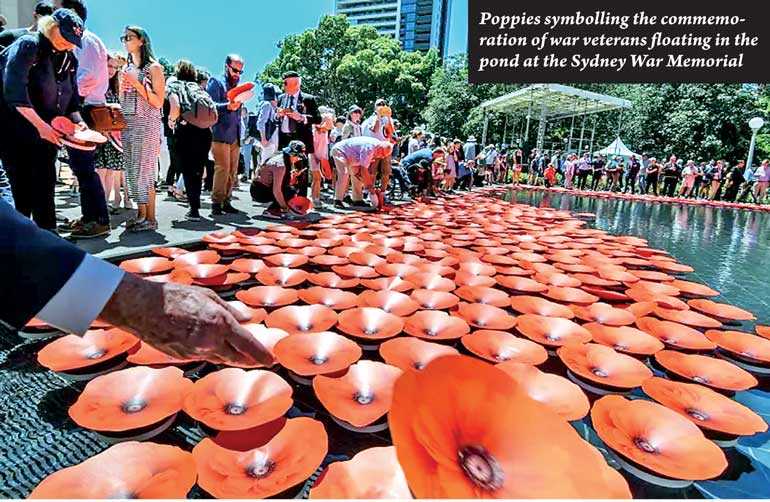Friday Dec 05, 2025
Friday Dec 05, 2025
Saturday, 17 November 2018 00:00 - - {{hitsCtrl.values.hits}}

Date: 11 November (11/11)
Time: 11 a.m.
Event: Observe one minute’s silence
Significance: In memory of the Australian soldiers who gave their lives during the wars
The day, referred to as Anzac Day (referring to Australia and New Zealand), is commemorated every year. This year was more significant. It marked one hundred years since the end of World War 1 (1914-18) and was termed Remembrance Day.
While the main commemorative ceremony is held at the National War Memorial in Canberra, the capital of Australia, ceremonies are also held on all the State capitals. This year 12,000 people gathered at the Canberra war memorial - many of them war veterans remembering their mates.
The First World War had claimed 62,000 Australian soldiers, more than half of all Australians who have died in battle.
Seeing the large crowd present at the ceremony, a war veteran remarked: “I think it’s right and proper that we see so many folks here today just to remember and hope that it doesn’t all happen again.”
Pointing out that the record crowd present was four times as large as usual, War Memorial Director Brendan Nelson said it was a message to those who have served and continue to serve. “It says we remember you, we honour you, we seek to learn from the mistakes we’ve made as a nation.”
Delivering the keynote speech, Prime Minister Scott Morrison, said “soldiers are often described as fearless, but they were actually brave”.
“They feared greatly but acted nonetheless, and it is this that embodies our highest aspirations as a nation and as people,” he said.
Opposition Leader Bill Shorten said the day was a solemn reminder of the sacrifices made to defend Australia and bring peace. “We must do better for our veterans and their families,” he said, and added, “Our veterans have done their duty, now we must do ours.”
Look back
 A report on the role of the Australian soldiers states:
A report on the role of the Australian soldiers states:
On 11 November 1918, the guns of the Western Front fell silent after four years of continuous warfare. With their armies retreating and close to collapse, German leaders signed an Armistice, bringing to an end the First World War.
From the summer of 1918, the five divisions of the Australian Corps had been at the forefront of the allied advance to victory. Beginning with their stunning success at the battle of Hamel in July, they helped to turn the tide of the war at Amiens in August, followed by the capture of Mont St Quentin and Pèronne, and the breaching of German defences at the Hindenburg Line in September. By early October the exhausted Australians were withdrawn from battle. They had achieved a fighting reputation out of proportion to their numbers, but victory had come at a heavy cost. They suffered almost 48,000 casualties during 1918, including more than 12,000 dead.
In the four years of the war more than 330,000 Australians had served overseas, and more than 60,000 of them had died. The social effects of these losses cast a long shadow over the post-war decades.
